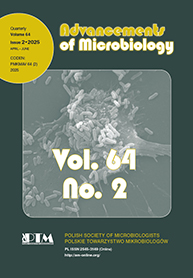Formatting literature and references
References
In-text references and the reference list at the end of the paper should be prepared according to the Council of Science Editors (CSE) documentation Name-Year (N-Y) system https://wac.colostate.edu/repository/resources/writing/guides/cse-nameyear/
In-text references should be cited in the form of the author’s last name and publication year in parentheses, e.g. (Anderson 2017). A paper with two authors should be cited in parentheses: (Nowak and Smith 2017). When there are more than two authors, the first author’s name should be followed by et al. While authors and year do not identify references, a, b should be used after the year (Nowak et al. 2002a; 2002b). When multiple works by different authors are cited, they should be put in chronological order from oldest to most recent (and alphabetically, if published in the same year). Separate studies by a semicolon: (Nowak et al. 2008; Smith et al. 2016). When the author’s name is mentioned in the sentence, the name may be omitted from the parentheses to avoid redundancy, using only the date. The date (in parentheses) should follow directly after a mention of the author’s name.
The list of the papers cited (Literature) is organized alphabetically according to the last name of the first author and not numbered. When there is more than one work by the author, those works are organized chronologically. Authors’ first names are rendered as capitals after their surnames as in an example: Nowak BS, Smith J, Coward PP. Papers with one only author are listed in chronological order (the earliest first); papers with two authors are listed alphabetically according to the last name of the first author and the last name of the second author. Papers with three or more authors appear as those with two authors and are listed chronologically.
Only the first word of a book or article title should be capitalized. Titles are not italicized. However, species names are italicized.
Here, you find examples:
Rumbaugh KP, Sauer K. Biofilm dispersion. Nat Rev Microbiol. 2020 Jun;18:571–586. https://doi.org/10.1038/s41579-020-0385-0
Ilczyszyn WM, Sabat AJ, Akkerboom V, Szkarlat A, Klepacka J, Sowa-Sierant I, Wasik B, Kosecka-Strojek M, Buda A, Miedzobrodzki J, et al. Clonal structure and characterization of Staphylococcus aureus strains from invasive infections in paediatric patients from South Poland: association between age, spa types, clonal complexes, and genetic markers. PLoS One. 2016 Mar 18;11(3):e0151937. https://doi.org/10.1371/journal.pone.0151937
Baraniak A, Grabowska A, Izdebski R, Fiett J, Herda M, Bojarska K, Żabicka D, Kania-Pudło M, Młynarczyk G, Żak-Puławska Z, et al.; KPC-PL Study Group. Molecular characteristics of KPC-producing Enterobacteriaceae at the early stage of their dissemination in Poland, 2008-2009. Antimicrob Agents Chemother. 2011 Dec;55(12):5493–5499 https://doi.org/10.1128/AAC.05118-11
Samet A, Bronk M, Sledzińska A, Labon M, Rybak B. [Nosocomial bacteremia] (in Polish). Przegl Epidemiol. 2006;60(1):35–41.
Use the proper journal title abbreviations (ISO4 standard) as indicated in the PubMed Journal Database.
References for books follow should be provided in the order: Author(s). Title. Edition. Place of publication: Publisher. Year. Extent.
As in an example: Nowak C, Smith P, Howard M. Virulence factors of Pseudomonas aeruginosa. Warsaw (Poland): PTM Press; 2008. p. 203–208.
References for chapters or other parts of a book should be provided in the order: Author(s). Chapter title. In: Editor(s). Book title. Place of publication: Publisher; Year. Page numbers for that chapter.
As in an example: Kosecka-Strojek M, Buda A, Międzobrodzki J. Staphylococcal ecology and epidemiology. In: Savini V, editor. Pet-to-man travelling staphylococci. A world in progress. Cambridge (USA): Academic Press; 2018. p. 11–24. https://doi.org/10.1016/B978-0-12-813547-1.00002-9
The Editorial Office strongly recommends using the dedicated software to manage and edit citations and literature. To easily adjust or change references according to the PJM requirements, choose a CSE citation style (N-Y option), which is build-in in these programs. List and comparison of reference management software may be viewed e.g., at the Wikipedia site.
Websites citations
Citing the websites of the public organization should contain: authors (if known [1]) or the name of the organization [2] (Publisher of the page), the title of the article, page name (if not already provided), date of publication (if provided [3]), www address, date of last address access
- http://www.who.int/news-room/fact-sheets/fs114/en (06.03.2014)
World Health Organization: What we know about transmission of the Ebola virus among humans. Ebola situation assessment, 06.10.2014,
The instructions in the CSE documentation system N–Y should be followed for all other cases not covered here.

